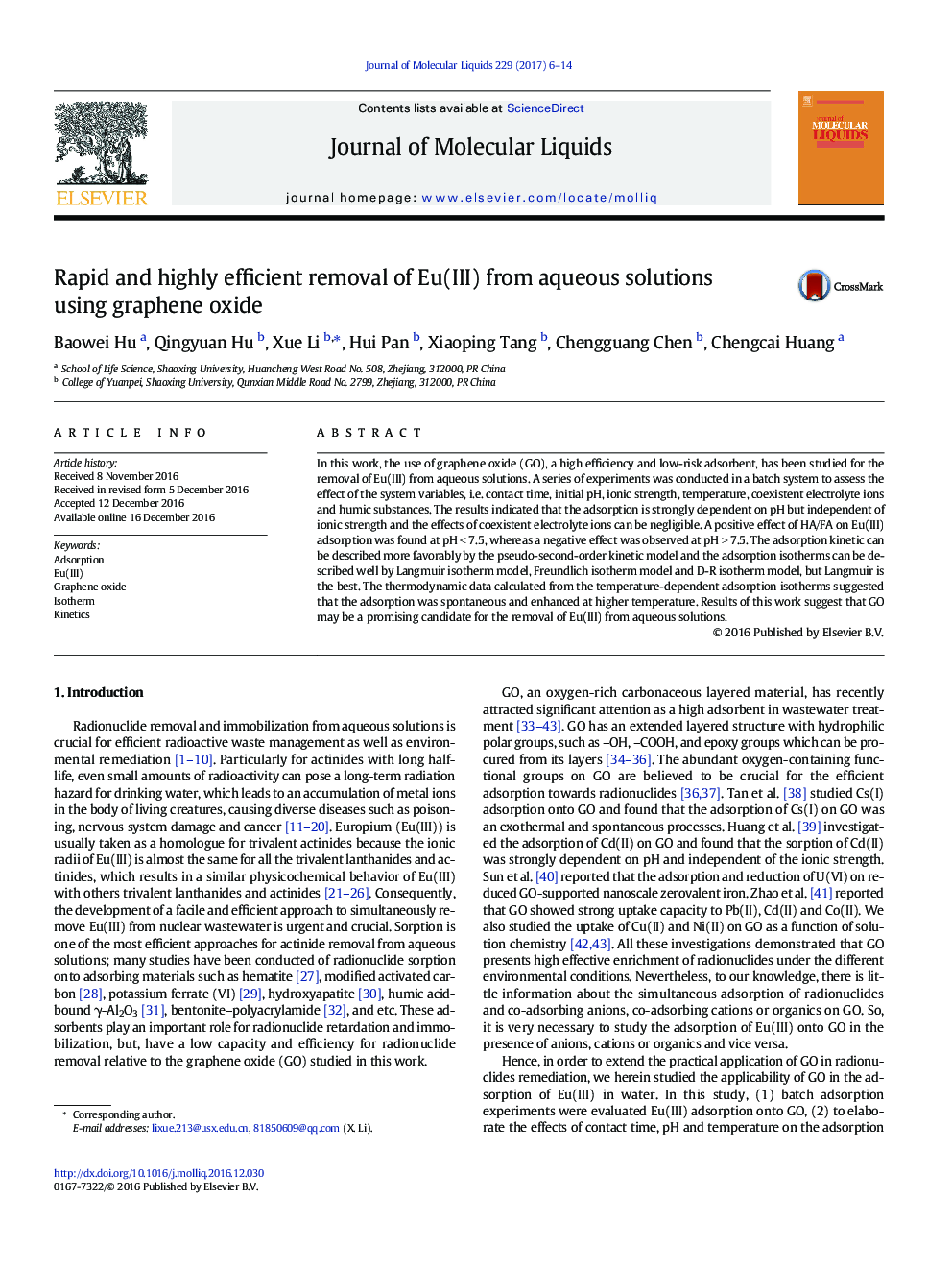| Article ID | Journal | Published Year | Pages | File Type |
|---|---|---|---|---|
| 5409118 | Journal of Molecular Liquids | 2017 | 9 Pages |
Abstract
In this work, the use of graphene oxide (GO), a high efficiency and low-risk adsorbent, has been studied for the removal of Eu(III) from aqueous solutions. A series of experiments was conducted in a batch system to assess the effect of the system variables, i.e. contact time, initial pH, ionic strength, temperature, coexistent electrolyte ions and humic substances. The results indicated that the adsorption is strongly dependent on pH but independent of ionic strength and the effects of coexistent electrolyte ions can be negligible. A positive effect of HA/FA on Eu(III) adsorption was found at pHÂ <Â 7.5, whereas a negative effect was observed at pHÂ >Â 7.5. The adsorption kinetic can be described more favorably by the pseudo-second-order kinetic model and the adsorption isotherms can be described well by Langmuir isotherm model, Freundlich isotherm model and D-R isotherm model, but Langmuir is the best. The thermodynamic data calculated from the temperature-dependent adsorption isotherms suggested that the adsorption was spontaneous and enhanced at higher temperature. Results of this work suggest that GO may be a promising candidate for the removal of Eu(III) from aqueous solutions.
Related Topics
Physical Sciences and Engineering
Chemistry
Physical and Theoretical Chemistry
Authors
Baowei Hu, Qingyuan Hu, Xue Li, Hui Pan, Xiaoping Tang, Chengguang Chen, Chengcai Huang,
